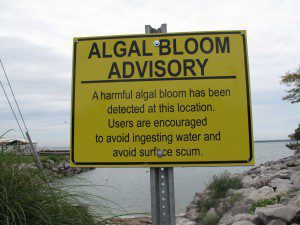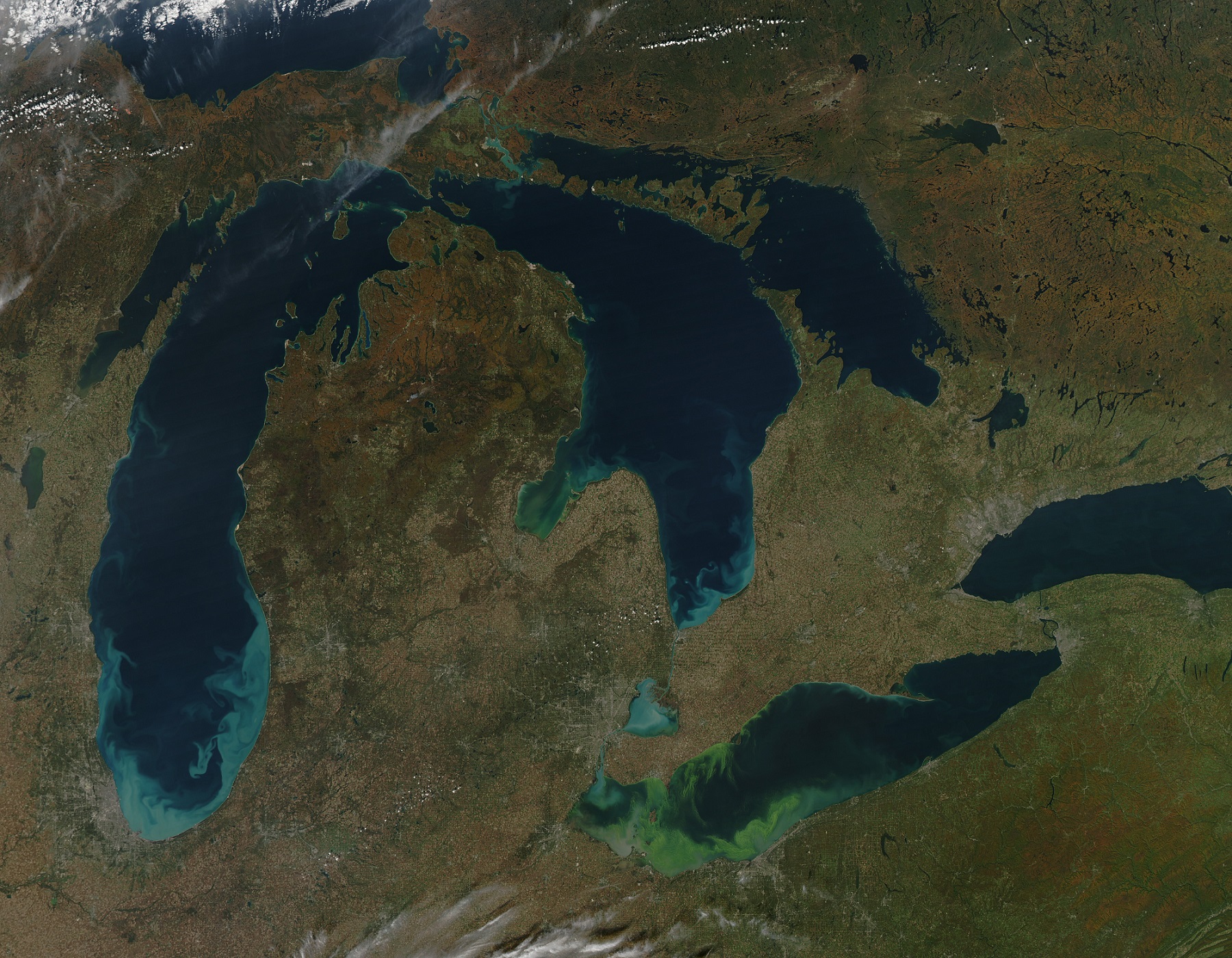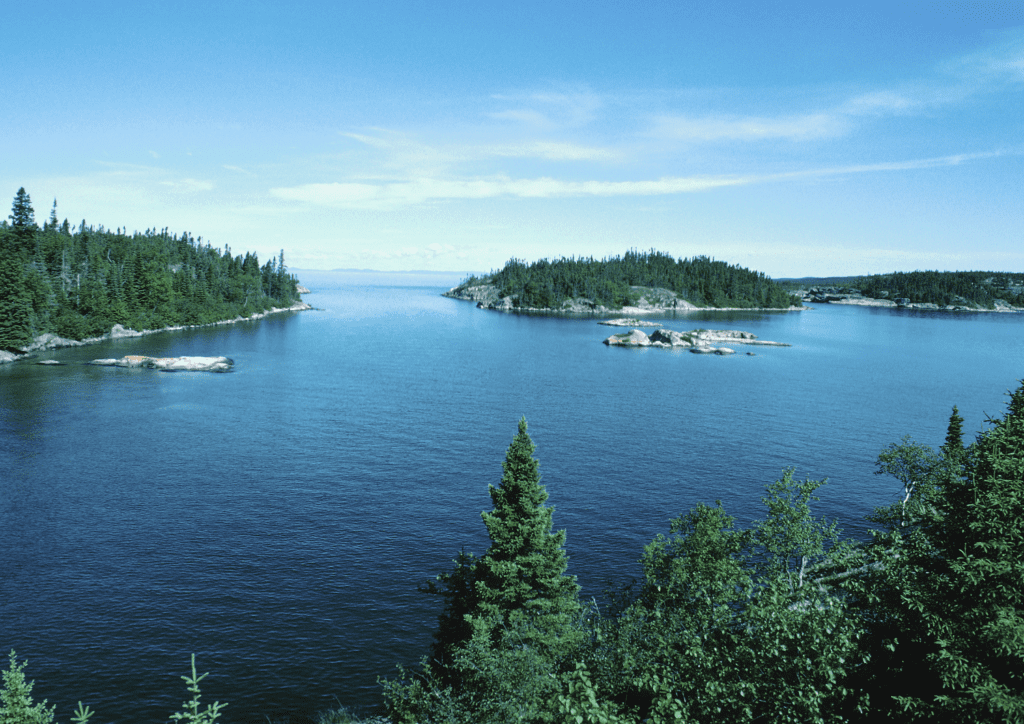Last week, the U.S. National Oceanic and Atmospheric Administration announced their 2016 algal bloom forecast for Lake Erie. Experts say 2016 will be a significant year for algae blooms, but likely not as severe as the blooms of 2013-2015. However, this news still isn’t good news for the lake.
A re-emerging threat


But now, the blooms are back and worse than ever before. The worst algal bloom ever recorded on Lake Erie happened in 2015. When these large masses of algae decay, they deplete the supply of oxygen in the water and cause dead zones that kill fish and other aquatic organisms. Some types of algae can even release toxins that contaminate drinking water (like what Toledo, Ohio experienced in 2014), cause beach closures, and harm the health of people, pets, and aquatic life that come in contact with the algae.
The solution: help farmers keep water clean
One of the main causes of the blooms is agricultural runoff. Agricultural runoff occurs when rain and snowmelt flush excess fertilizers and manure off farm fields and into streams and rivers. Those streams then carry the nutrient-rich fertilizers and manure into Lake Erie where they end up feeding the growth of algae rather than the crops for which they were intended.
Farmers are working to reduce nutrient loss. They have a vested interest in keeping fertilizer on fields, and out of our waterways; fertilizers cost money, and no one wants to pay for nutrients that get washed away. But improved environmental management practices also come with a price tag. Ontario needs to work with farmers to overcome economic barriers, and ensure a healthy Lake Erie. The province has committed to reducing nutrient loading through the Great Lakes Water Quality Agreement and the Great Lakes Protection Act, but despite these commitments, funding for nutrient pollution reduction falls short of what’s needed.
Ontario needs a source of sustainable funding to help farmers adopt practices that contain and treat nutrient-rich runoff. One way to secure funding is through a market-based solution, like a deposit return program for plastic beverage containers.
A deposit return would increase recycling rates, keep plastic litter out of our environment, and raise money that could support an environmental fund to help farmers reduce nutrient loss. This type of policy tool would result in the transfer of money from an undesirable activity (e.g. plastic pollution) to a desirable one (e.g. reducing nutrient pollution). New Brunswick has a system just like this; every year the province raises millions of dollars from a deposit return on beverage containers to fund important environmental projects.
Take Action
Protecting Lake Erie requires a clear focus on helping farmers reduce nutrient runoff.
Want to help? Tell Ontario to “Cash it! Don’t trash it” by introducing a deposit return program to help fund efforts that protect our freshwater.







